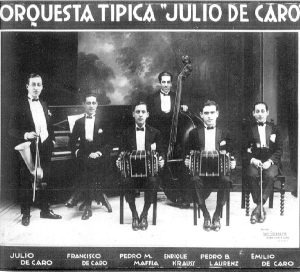Contrary to what you might believe or think, distance, space, and rightfully precision absolutely matters when it comes to Argentine Tango. Let’s back up a bit and define a few things before we delve too deeply into today’s Tango Thought. Precision as defined by Webster’s Dictionary (2017) is a noun as derived from the English word ‘precise’ which is itself an adjective meaning “definitely or strictly stated, defined, or fixed”. Clear ? Not. In short, ‘Precision’ means that there is an area of exactitude, and/accuracy, finite accuracy, finely tuned acute and tight accuracy. And that just about sums up what has to happen with regards to Argentine Tango.
Argentine Tango requires precision on multiple levels, kinesthetically, physiologically, geometrically, physically….just to name a few. And precision in this case refers to 2 to 3 Millimeters. That’s how much it takes for you to be ‘off’. Just that tiny amount is the difference between a dancing experience that feels as though you’re struggling, and one that is seemingly effortless. To be fair or to be clear, it’s important to recognize here (as many of you won’t do) that this is not the sole solution to all your problems. It’s not. That if you’re just in the right place, then all will be better. No. There are other considerations like instability (lead and follow), body position and body placement, hanging, pulling, pushing, compression, tension, force, just to name a few. This idea of 2 or 3 Millimeters is really an observation based on many years of watching people, students, dancers kill themselves because they’re in the wrong place and is only one factor in a series of factors that can contribute to a desirable experience or one that is shall we say, less than desirable.
Some examples ?
One common example is in the Follower’s Back step in a walking step, and sometimes the Lead’s Forward Step especially when going into and out of Cross-System walking. If the Follower’s leg, as it extends backwards, moves away from the natural body meridian line by just 2 millimeters, that means that consequently the foot will land 2 millimeters away from the implied walking line. Assuming that the Follower is trying to walk on two separate, but equal walking paths that do not cross the natural body meridian, then those 2 millimeters become an issue of balance, especially in 3 in. heels (76 millimeters), more like an issue of stability more than anything else. The Follower can and will lose their balance the further out and away that the leg goes as they attempt to come to collection. This does not presuppose if the Follower is landing on the 4th or 5th metatarsal, as doing so is fraught with its own set of problems.
Another common example is on the Follower’s Molinete, where as the Follower steps away from their Lead on the Follower’s back step of the Molinete, the further away that the step is, the more challenging it is to continue the turn in any semblance of an actual embrace. The Lead either has to compensate by stepping into the Follower’s space or they must compress the Follower with their arms to keep them ‘close’. Neither is desirable by the way. And if this turn is in Close Embrace, those 2 or 3 millimeters that the Follower has sent their back step away from their Lead, is like a country mile (in other words: HUUUUGE!).

Still another, while both of those examples are seemingly ‘Follower’ bashing, here’s one for the Lead: The Embrace itself. If the Lead’s body is stuck in this gray area of Close-To-My-Partner’s-Body-But-Not-Actually-Touching vs. Actual Close Embrace (body on body, cuerpa de cuerpa). That slight distance of 2 or 3 millimeters when leading any one of the 8 kinds of Turns, any one of the 8 types of Ochos, any of the 256 available Argentine Crosses, quite literally sends the Follower away and that means that the Follower as a result will be in the wrong position a good 80% of the time. Specifically in turns (all 8). It means that the Follower has to create a bigger walking circle than they normally would, which means that in turn (no pun intended) the larger the walking circle they either have to speed up (not desirable), or take gaping steps just to stay behind their Lead. Note what was said, “behind their lead”. Because in this instance, assuming it’s the Follower’s Molinete, those 2 or 3 millimeters will force the Follower to go even further into the Lead’s Armpit! Which is not desirable!
Reality Check: Seriously TangoTopics, two or three millimeters ? Really ? Isn’t this just the anal retentive ravings of a teacher that’s wound just a little too tight and has nothing better to do except to sit in front of a keyboard and think this sh*t up ? Quite honestly dude, it’s just supposed to be a ‘fun’ dance and if what you’re saying is true, then that sounds like the kind of detail work that only a professional would do. Right ?
Wrong!
Put simply those 2 or 3 Millimeters of distance can actually make the difference between a dancing experience where you’re hanging, pulling, pushing your partner, using your arms, falling behind, feeling off-balance and/or unstable, and one where the dancing experience feels like it’s smooth as ‘buttah’ (butter to non-native English speakers). Which one do you want ? Most people want the dance that feels like ‘buttah’, unfortunately for a variety of reasons they delude themselves into thinking that they’re dancing feels like ‘buttah’ when in fact they’re living in the 2 to 3 Millimeter phase of their dance and all that goes with it.
- Glossary: Meridian
- Glossary: Follower's Molinete
- Glossary: Close Embrace
- Glossary: Compression
- Glossary: Cross Walking System
- Glossary: Collection
- Glossary: Molinete
- Glossary: Pulling
- Glossary: Pushing
- Glossary: Tension
- Glossary: Embrace
- Glossary: Cross
- Glossary: Force
- Glossary: Walking
- Glossary: Leading
- Glossary: Turns
- Glossary: Ochos
- Glossary: Armpit
- Glossary: Lead











